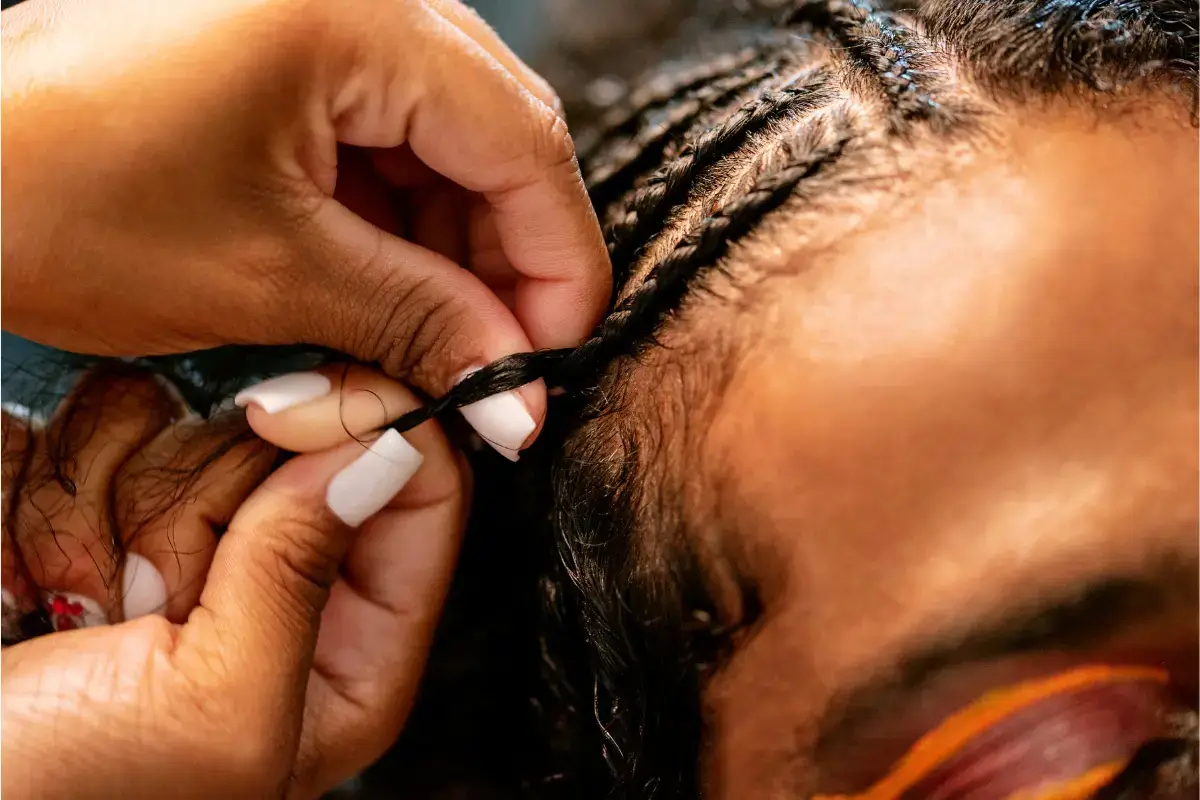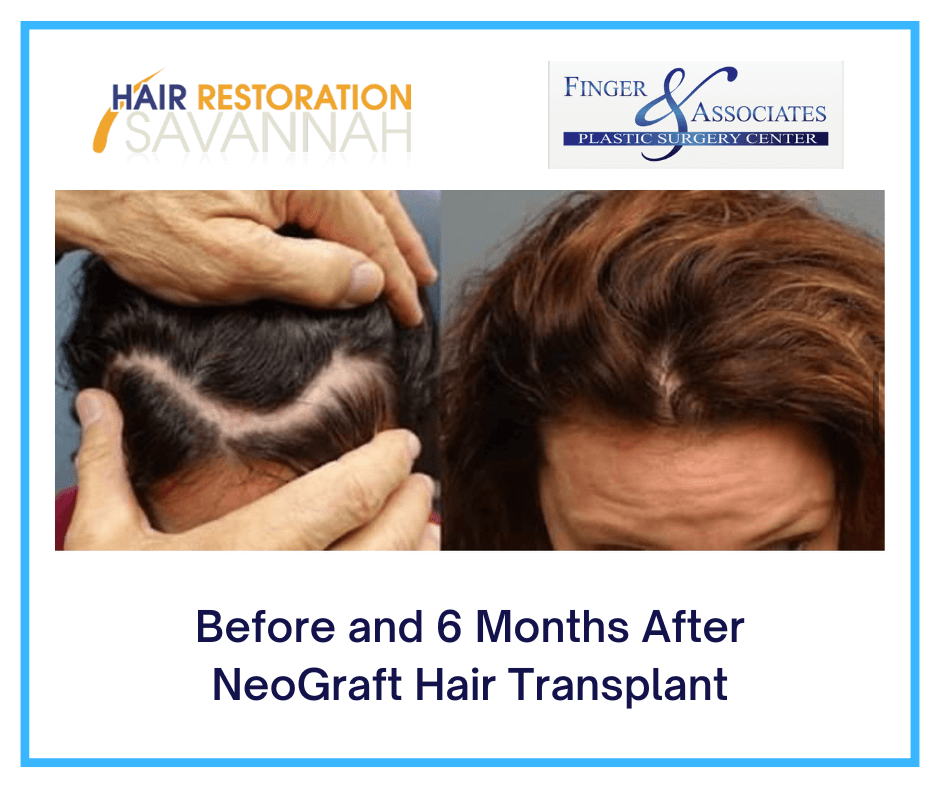
Ladies, Let’s Talk About Hair Loss
Hair loss affects more women than you might realize. If your part is getting wider, your ponytail feels thinner, or you are seeing more breakage around the edges, you are not alone. Right now in the United States, more than 30 million women are experiencing noticeable hair loss.
At Hair Restoration Savannah, Dr. E. Ronald Finger offers women real options to restore their hair, their confidence, and their peace of mind. Using advanced techniques like NeoGraft and the strip method, Dr. Finger creates personalized plans that work for women of all hair types and ethnicities.
Why Are So Many Women Losing Hair in 2025?
Hormonal shifts during perimenopause and menopause continue to be one of the leading causes of hair thinning. But they are far from the only reason women are seeing more hair loss than ever before.
Hair loss in women is now influenced by:
- Hormonal imbalances
- Nutritional deficiencies
- Stress and illness
- Autoimmune conditions
- Styling habits and product use
In today’s world, almost every ethnic group is affected. African American, Hispanic, Asian, Indian, and Caucasian women are all reporting earlier and more significant thinning than generations before them. Part of this is due to internal factors like hormone changes and diet, but a large part is related to external stress placed on the hair.
Traction Alopecia: The Hidden Cause Behind Styling Habits
Wigs, weaves, braids, extensions, buns, and tight ponytails can all contribute to a type of hair loss called traction alopecia. This happens when hair is repeatedly pulled or stressed over time, causing the follicles to weaken and eventually stop producing hair.
While these styles may be protective or cultural in nature, they often apply consistent tension to areas like the edges, temples, and crown. Over time, the damage becomes permanent. What started as simple thinning turns into patches where hair no longer grows at all.
Traction alopecia is especially common in African American women, but the same issue is becoming more visible in Asian, Hispanic, and White women as high-tension styling practices become more popular across cultures.
Diet and Health Matter Too
Hair loss can also be a reflection of what is going on inside the body. Inflammation, vitamin deficiencies, iron loss, and thyroid disorders all affect the hair growth cycle. Many women experiencing weight fluctuations, fatigue, or chronic stress also notice increased shedding and slowed regrowth.
The modern diet, high in processed foods and low in nutrients, can accelerate the weakening of hair follicles. When combined with styling habits and hormonal changes, it creates the perfect storm for hair loss.
You Do Not Have to Cover It Up Anymore
Many women feel pressure to hide their thinning hair under wigs, scarves, or hats. While those can offer temporary relief, they do not stop the loss, and in many cases, they make it worse.
If the back of your scalp still has healthy hair follicles, you may be a great candidate for a hair transplant. This is a permanent solution that restores your own natural hair to areas where growth has stopped.
NeoGraft for Women
NeoGraft is a modern, minimally invasive hair transplant technique that gently removes individual follicles from the donor area and places them exactly where they are needed. It requires no scalpel and no stitches, which makes it ideal for women who want minimal downtime and no visible scarring.
NeoGraft works especially well for:
- Receding edges
- Thinning at the part line
- Small patches of hair loss
- Women who wear their hair up or short
Results look soft and natural, and the new hair grows in slowly over several months. Once it grows in, it is yours for good.
The Strip Method for Women
The strip method, also known as FUT, involves removing a small strip of skin with healthy follicles from the back of the scalp. Those follicles are then carefully transplanted to the thinning areas.
This method allows for a higher number of grafts in a single session and is ideal for women with more advanced hair loss. The scar is very fine and hidden easily by surrounding hair. Dr. Finger uses advanced closure techniques to ensure minimal visibility and excellent healing.
Who Is a Good Candidate?
If you are a woman experiencing hair thinning or hair loss and still have healthy hair at the back of your scalp, you may be a candidate for hair restoration. During your consultation, Dr. Finger will examine your scalp, review your medical history, and discuss your goals. You will receive a personalized plan designed to restore fullness in a way that looks natural and fits your lifestyle.
We Treat Women of All Hair Types and Backgrounds
At Hair Restoration Savannah, we work with women of all ethnicities and hair textures. Whether your hair is coily, curly, straight, or wavy, your plan will be built around your unique pattern and density.
We understand that cultural and lifestyle factors play a big role in how you manage your hair. That is why we take the time to learn your history, your concerns, and your vision for the future.
Supporting Scalp Health Before and After Your Procedure
To maximize results, we may recommend supportive treatments like:
- HydraFacial Keravive for deep scalp cleansing
- PRP or exosome therapy to nourish and activate follicles
- At-home regimens that support scalp circulation and hair strength
These therapies are often used before and after your procedure to encourage healing, improve graft survival, and boost long-term growth.
When Will You See Results?
Hair typically begins to grow around three months after the procedure. You will start to notice real changes by month six, with full results visible in about nine to twelve months. Because this is your own hair, it can be styled, washed, and colored just like before.
The transplanted follicles will continue to grow for life.
Fast Facts About Hair Loss in Women
- More than 30 million women in the United States have noticeable hair thinning
- One in four women will experience hair loss by age 50
- Traction alopecia is rising in all ethnicities due to wigs, weaves, braids, and extensions
- Hair loss affects African American, Asian, Hispanic, and White women alike
- A healthy donor site means hair restoration is often possible
- NeoGraft and the strip method are both safe and permanent options for women
- You can expect to see new hair growth within six to twelve months
Take the First Step Toward Restoring Your Hair
Hair loss can be emotional and isolating, but you do not have to go through it alone. You deserve answers, support, and options that work.
If you are ready to learn more about hair restoration for women, schedule a private consultation with Dr. E. Ronald Finger at Hair Restoration Savannah. We will help you understand what is happening, what is possible, and what steps you can take to get your confidence back.
Contact us today. Your hair deserves it. So do you.




